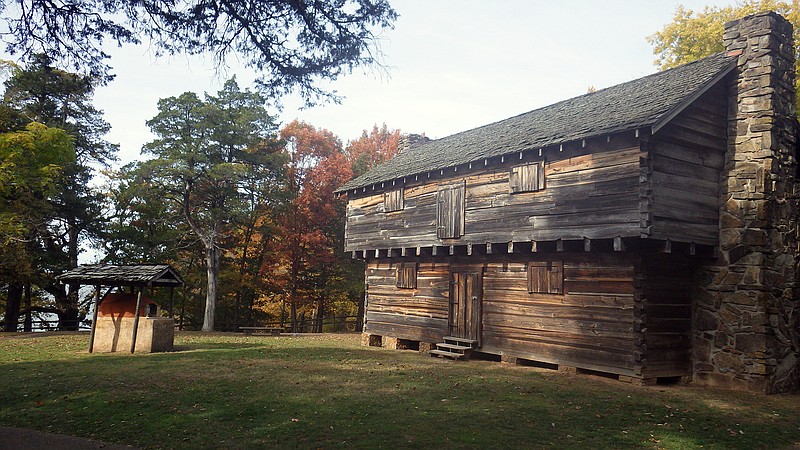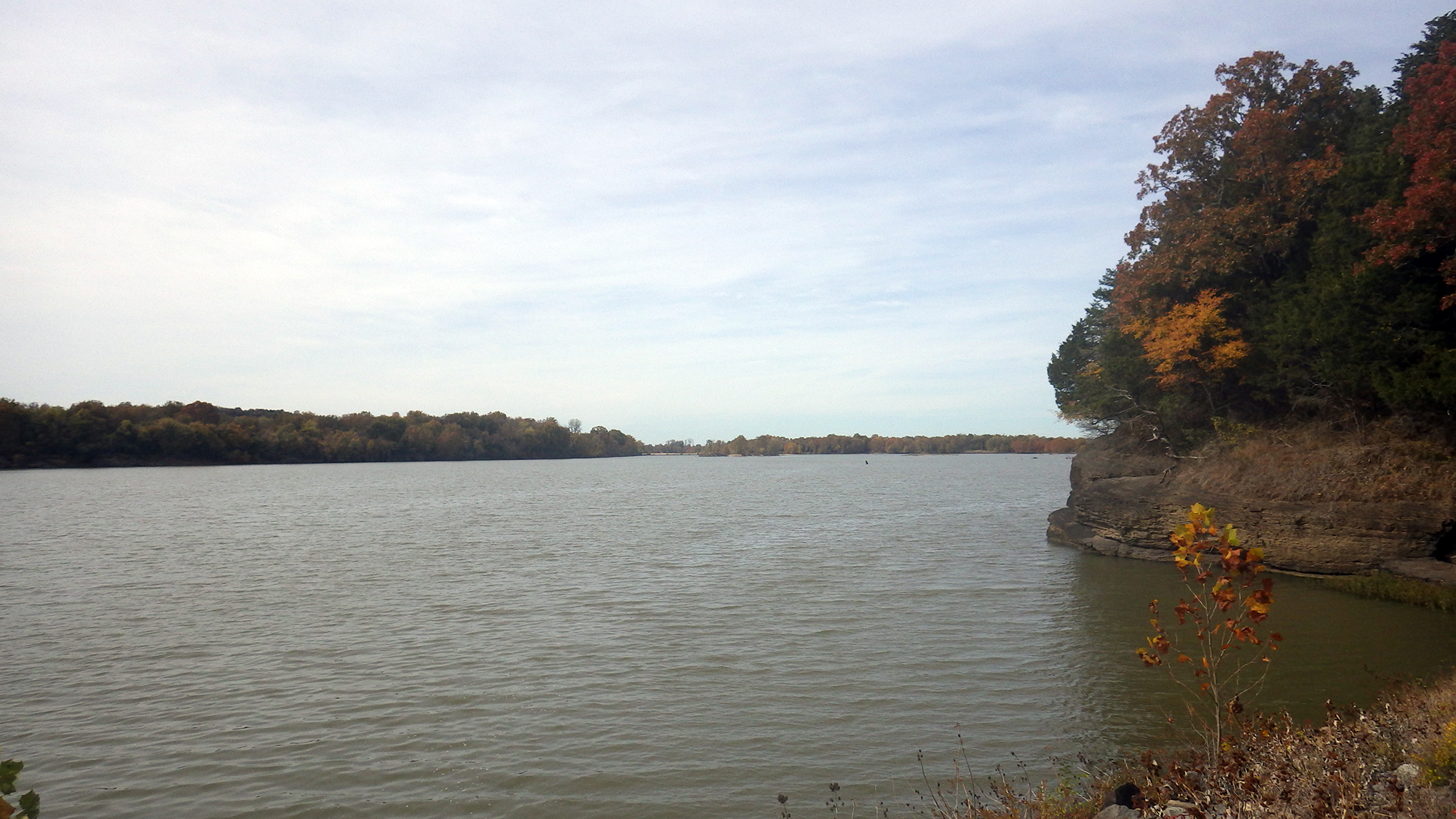Outdoor writer and photographer Corbet Deary is featured regularly in The Sentinel-Record. Today, Deary takes readers on a journey to Cadron Settlement Park.
Having spent the past couple of decades writing outdoor destination articles, I've had the pleasure of visiting a plethora of historic sites throughout Arkansas.
In turn, I have certainly learned how to utilize my imagination, stepping back in time and drawing a mental picture of what my mind conceives as what transpired in eras that are far different from what we are accustomed to today.
That being said, it is far easier for my imagination to flow when an old structure, or at least the remnants, remain. And it just so happens that the Cadron Settlement Park provides visitors with such a scenario. Well, the two-story structure, referred to as the Cadron Blockhouse, is actually a replica of a building that was used primarily for defensive purposes in the late 1800s. However, the building certainly helps set the stage for this particular destination's interesting story.
It all began when several families arrived and set up house in the vicinity of the confluence of Cadron Creek and the Arkansas River. In fact, according to information posted on http://www.encyclopediaofarkansas.net, Cadron was "the first permanent white settlement in central Arkansas."
Video not playing? Click here https://www.youtube.com/embed/TWdQjnWxQ2Q
Although John McElmurry had already arrived at Cadron some time earlier, the settler/trader and three other investors began laying out the town in 1818, utilizing in the neighborhood of 64 acres that were situated at the mouth of Cadron Creek.
The original plat maps is not known to still be in existence. However, it is speculated that as many as 14 blocks might have surrounded the town square.
Ownership of the land was finally patented to McElmurry in 1830. But unfortunately, he had passed three years earlier.
One would think that Cardron was well situated, as it rested on the banks of the Arkansas River, lending to opportunities for prosperity. The town's late founder had built a blockhouse on the hill overlooking the river, of which would serve as a residence and a tavern. But the structure had yet another purpose, as well, as McElmurry needed a base for his fur trading business. His most reliable customer was the Cherokee tribe, which resided on designated land to the northwest.
A ferry also crossed the river at the Cadron Settlement, providing access to roads and trails leading to various locations including Arkansas Post, Hot Springs and St. Louis.
However, according to the aforementioned website, "English naturalist Thomas Nuttall, who visited Cadron in March of 1819, found prospects for the town limited by the small area of good ground lying between infertile hills and forest lands."
McElmurry and his extended family, consisting of five or six children, wives and slaves, were the only town residents during Nuttall's initial visit. However, he noted that several more families had taken residence in the town upon his return visit one year later.
The tavern was thriving and a weekly mail service had began. And Cadron was being considered by the state Legislature as the territorial capital and the Pulaski County seat.
In fact, the office of Alexander H. Rennick, who began his tenure as the county clerk in 1820, was located at Cadron. And the state Legislature approved $1,400 to build and jail and courthouse at the young town later that same year. But construction never began, as the Legislature voted to relocate the county government to Little Rock in 1822.
Cadron experienced yet another gleam of hope in 1825, when the town was chosen as the temporary seat of the newly formed Conway County. But once again their aspirations were short-lived. The post office had already been relocated upstream, to Point Remove, just one year earlier.
In turn, the young town's growth spurt was short-lived, as the town had been abandoned by 1831. And the county seat was eventually moved to Harrisburg.
Although the town was still holding on, one might think that the town founder's death in 1827, and the Indian Removal from the state in 1828 were likely the straws that broke the proverbial camel's back. And the town had been abandoned by 1831.
Attempts were made to reclaim the Cadron throughout the following years, predominantly by ferryboat operators. And one entrepreneur platted out a town with hopes that a stage stand on the road would lend to success. However, all attempts went in vain. And in spite of the fact that traffic along this particular section of the river was substantial during the Civil War, the vacant town apparently failed to show significant strategic importance.
Although Cadron ultimately failed as a town, that's no indication that it lacked in historical significance. And in turn, the Faulkner County Historical Society, the Conway Chamber of Commerce and the U.S. Army Corps of Engineers embarked upon a joint effort in 1976, and the Cadron Settlement Park was born.
The aforementioned blockhouse, which was historically consistent with Nuttall's sketch, was built, and the park was dedicated in 1979. But Cadron once again suffered a stroke of bad luck, as vandals burned and destroyed the building in 1992. Fortunately, yet another structure was built and still stands today.
Although a rich history is more than enough reason to visit the Cadron Settlement Park, it has more to offer to visitors than just an interesting story.
Of course, the view is impressive, as the facility is situated on the banks of the Arkansas River. But it also provides a number of opportunities to those with an interest in various outdoor activities.
Local anglers take advantage of the launching ramp to access the Arkansas River, and many utilize the pavilion as a location where they might gather with family and friends.
The Cadron Settlement Park Trail welcomes both hikers and mountain biking enthusiasts. The designated route winds and twist through a wooded area, making a few short, but steep, accents along the way.
The designated path lends to between 4 and 5 miles. I have hiked and enjoyed the route on a couple of occasions. However, it also seems to be growing in popularity within the cycling community, as well. In fact, the designated path is one of few, if not the only, intermediate/technical mountain biking trail in the Conway vicinity.
Those tackling the trail can expect incredible views, bermed turns, switchbacks and an occasional bridge. Some riders find the ride exciting, yet short enough that they can embark upon a ride after work.
I can say with all certainty Cadron Settlement Park is a location that has lent to an enjoyable outing during each and every visit. And it is a location where I suspect pretty much anybody with an interest in Arkansas' history, or the slightest passion for the outdoors will enjoy, as well.
To get to the park from Hot Springs, take Highway 70 east for 17 miles to Interstate 30 and head east, toward Little Rock. Travel 18 miles and take Exit 129 to merge onto I-430 north, toward Fort Smith. Remain on I-430 for 13 miles and take Exit 13B onto I-40 west, toward Fort Smith. Go 24 miles and take Exit 124B onto Salem Road toward Highway 25 south. Drive a half-mile and take a right onto Old Morrilton Highway. Go 3.2 miles and turn left onto Highway 319. Travel 1.6 miles and take a right onto Cadron Settlement Park Road. Go 300 feet and turn right onto Cadron Settlement Lane. Travel two-tenths of a mile and turn right to remain on Cadron Settlement Lane. Travel 600 feet and the destination will be on the right.

